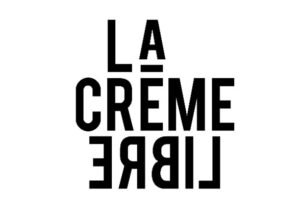
The judgment of the General Court (GC) concerns a textbook case and addresses the typical arguments in trademark conflicts in the cosmetics sector.
Facts
The Applicant, Azalee Cosmetics, applied for registration of the following sign as an EU trademark for cosmetic products (class 3), cosmetic utensils (class 21), corresponding retail services (class 35) and beauty treatments (class 44):

The Intervener, L’Oréal (UK) Limited, filed an opposition based on its earlier EU word mark LIBRE, registered for perfumes in class 3.
The Opposition Division assumed a likelihood of confusion and largely upheld the opposition (except for nutritional and dietary advice in class 44). The First Board of Appeal (BoA) largely rejected the Applicant’s appeal (except for dentifrices in class 3, brushes and combs in class 21 and related retail services in class 35). The Applicant appealed against this decision.
GC Decision
The GC dismissed the action and upheld the BoA’s decision for the following reasons:
Firstly, the standard of assessment is the general public with an average level of attention. It is not apparent from the Applicant’s list of goods and services that these relate to luxury cosmetics. Even if there was a higher level of attention among parts of the relevant public, the lowest level is decisive.
Secondly, the goods in class 3 are identical or similar. The GC rejects the Applicant’s argument that the goods have different purposes. The Applicant had argued that the goods covered by LIBRE were only intended to be perceived as a fragrance, whereas the goods covered by LA CRÈME LIBRE moisturised the skin.
Thirdly, even if they are in different classes, goods and services can be similar if they are in competition with each other, if they complement each other, or if they have similar purposes. Therefore, the goods and services covered by the two trademarks are similar. In particular, the GC considers cosmetic utensils (class 21) and cosmetic products (class 3) to be complementary and thus similar, albeit only slightly similar: The former are indispensable for the latter, but they differ in nature, purpose and use. Retail services in connection with specific goods in class 35 and beauty treatments in class 44 are slightly similar to the goods in class 3 as they are complementary, even if the goods and services differ in nature, purpose and use.
Fourth, the mark applied for only becomes minimally distinctive through LIBRE. There is no dominant element. The conflicting signs are visually slightly similar. The identical component LIBRE is clearly legible despite the mirrored letters. Phonetically, LA CRÈME LIBRE and LIBRE have average similarity. Despite the different number of syllables and different rhythm, the French-speaking public would perceive LIBRE to be phonetically identical in both marks. Conceptually, the signs are similar to an average degree. In LA CRÈME LIBRE, the word LIBRE retains its meaning. The unitary expression LA CRÈME LIBRE therefore evokes freedom, not a “free cream”.
Fifth, the GC holds that LIBRE possesses average distinctiveness. Although many LIBRE trademarks coexist in the register, a coexistence on the market was necessary for the scope of protection of the earlier trademark to be limited, something which the Applicant did not prove.
Taking into account the overall average similarity of the signs, the proximity of the goods and services, the distinctive character of LIBRE and the principle of interdependence and imperfect recollection, the French-speaking public with an average level of attention could believe that the goods and services came from the same undertaking. There was therefore a likelihood of confusion. This could not be refuted by a market study according to which only 20% of respondents mentally associated the signs and 28% thought they came from the same company without knowing the goods and services.
Practical advice
The General Court extends its case law on the similarity of signs to the effect that signs can still be similar even if the earlier mark (1.) is adopted in its entirety, (2.) is supplemented by two – visually distinct – words and (3.) does not dominate the later composite sign (see GC, judgment of 04.05.2005 – T-22/04 – WESTLIFE/West).
_____________________________
To make sure you do not miss out on regular updates from the Kluwer Trademark Blog, please subscribe here.
Kluwer IP Law
The 2022 Future Ready Lawyer survey showed that 79% of lawyers think that the importance of legal technology will increase for next year. With Kluwer IP Law you can navigate the increasingly global practice of IP law with specialized, local and cross-border information and tools from every preferred location. Are you, as an IP professional, ready for the future?
Learn how Kluwer IP Law can support you.


